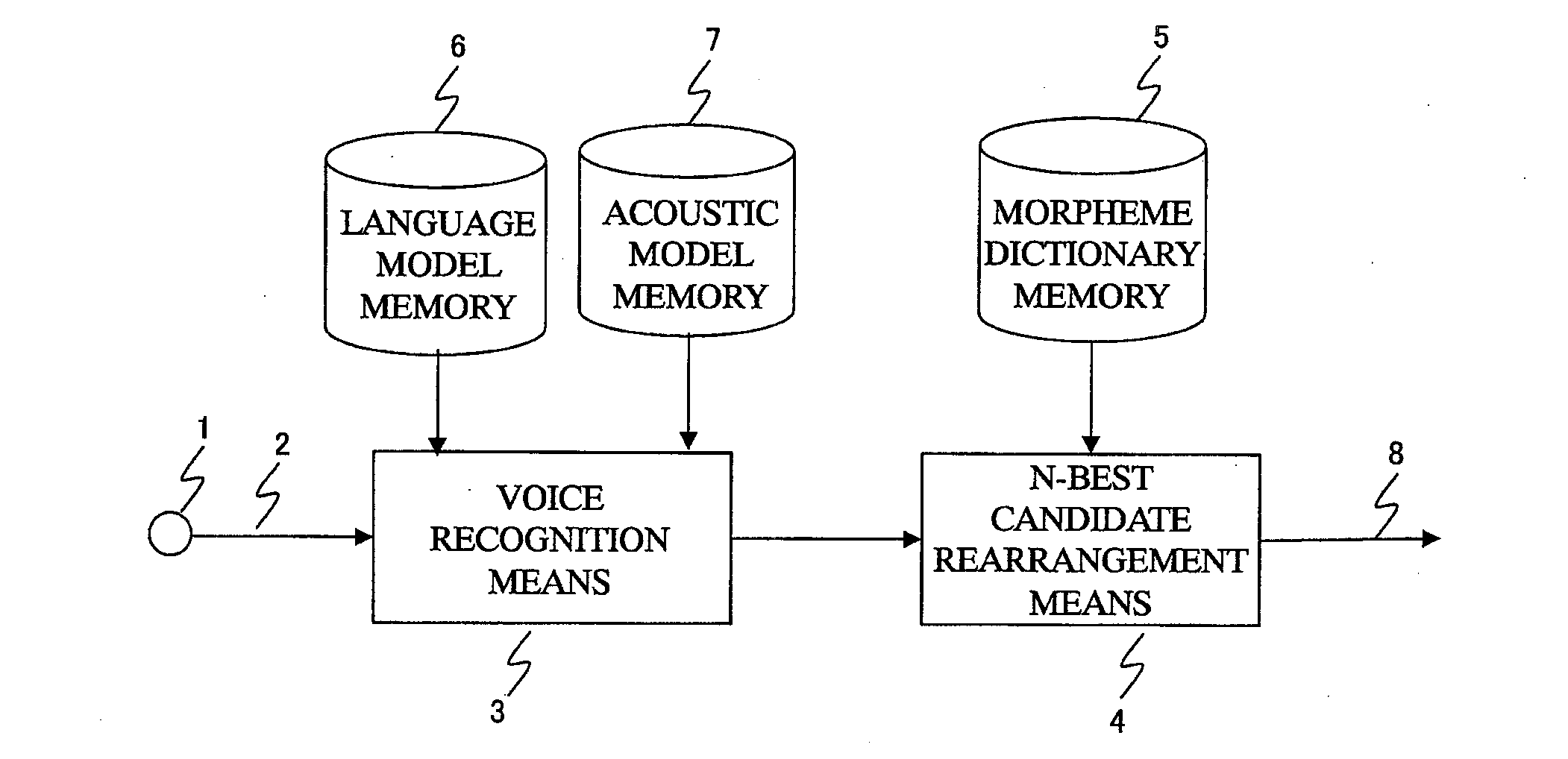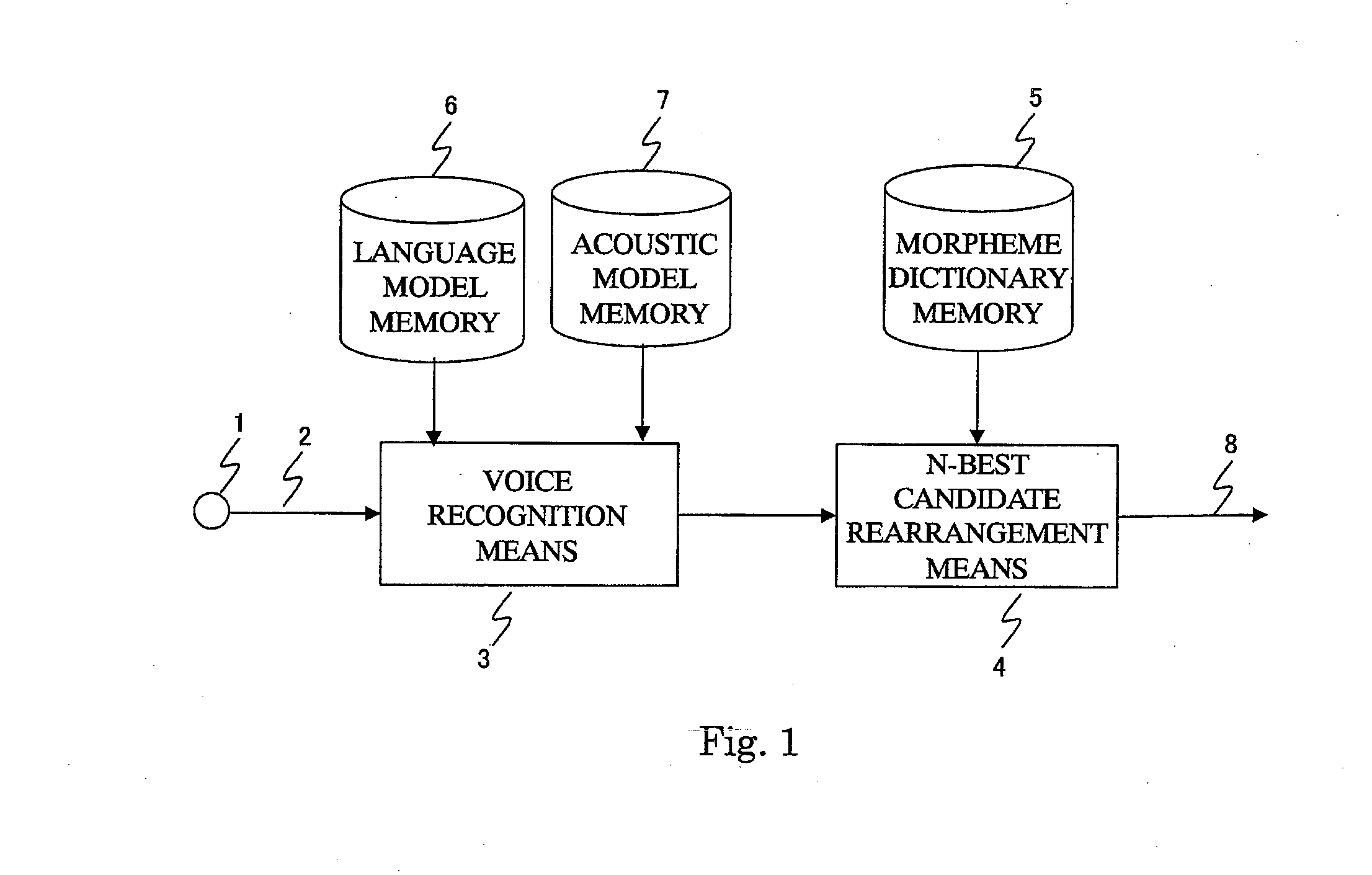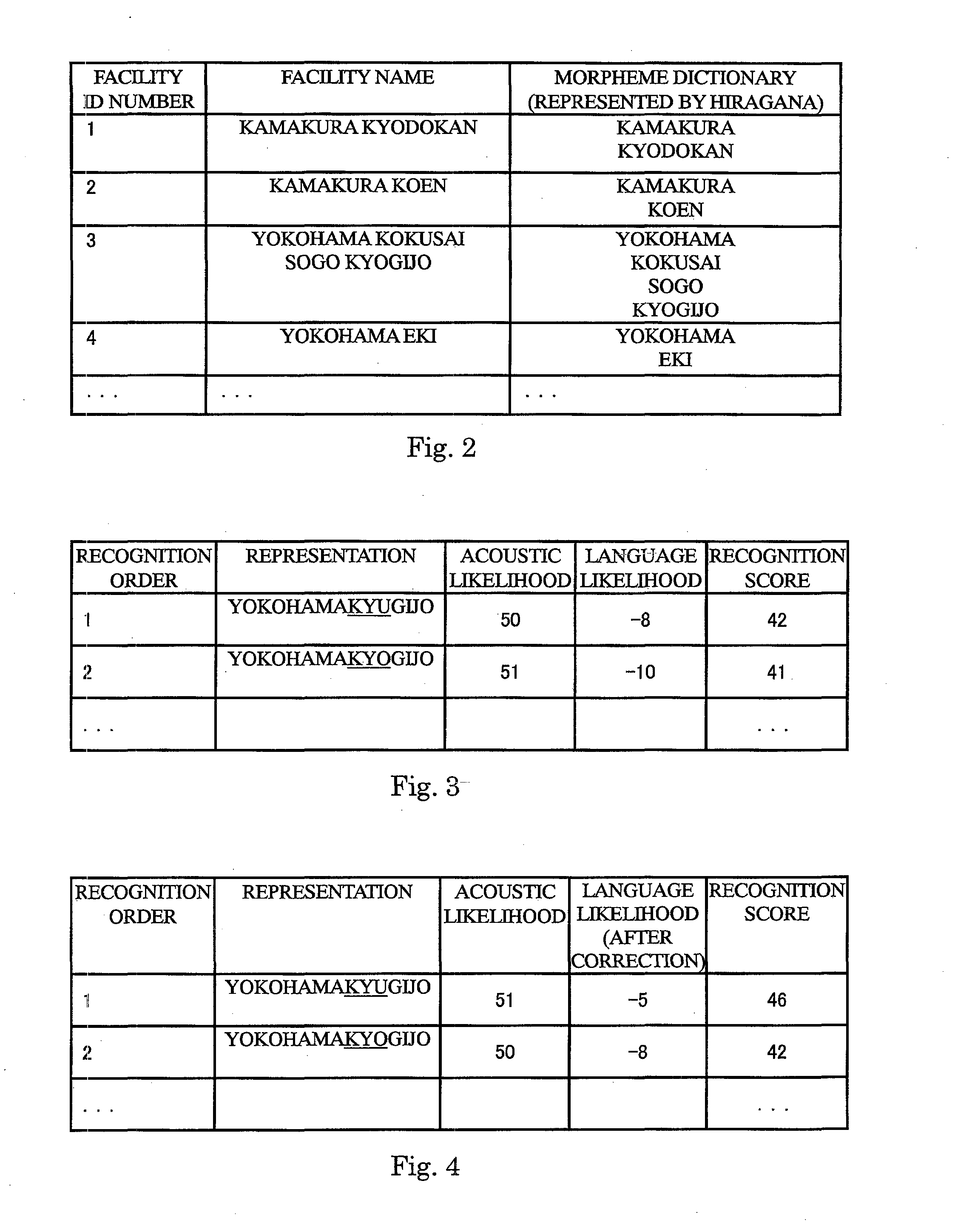Voice recognition device
a voice recognition and voice technology, applied in speech recognition, speech analysis, instruments, etc., can solve the problems of large amount of labor required for building rules and databases for automatic generation, difficult to generate all paraphrased words, and large amount of calculation for content comparison to morpheme dictionaries, etc., to achieve the effect of increasing the amount of calculation for content comparison and increasing recognition precision
- Summary
- Abstract
- Description
- Claims
- Application Information
AI Technical Summary
Benefits of technology
Problems solved by technology
Method used
Image
Examples
first embodiment
[0020]A description is given of an embodiment by taking as an example a case in which names of facilities and tourist spots (hereinafter, for the sake of simplicity, facilities and tourist spots are generally referred to as facilities) all over Japan are recognized by means of voice recognition.
[0021]FIG. 1 is a block diagram illustrating a configuration of a voice recognition device according to a first embodiment of the present invention. In this figure, reference numeral 1 denotes an input terminal for voice; 2, input voice; 3, voice recognition means; 4, N-best candidate rearrangement means; 5, morpheme dictionary memory; 6, language model memory; 7, acoustic model memory; and 9, recognition result.
[0022]A statistical language model is generated and stored in advance in the language model memory 6. In this embodiment, trigrams having a syllable as a unit are learned and stored using, as training data, syllable strings, which are representations of facilities all over Japan. An a...
second embodiment
[0045]A voice recognition device according to this embodiment is constructed by newly adding a sub-word index memory 9 to the voice recognition device according to the first embodiment, thereby changing the operation of the N-best candidate rearrangement means as described later. A configuration example of the voice recognition device according to this embodiment is illustrated in FIG. 6.
[0046]The voice recognition device is the same as that of the first embodiment except for the sub-word index memory 9, and a description thereof is therefore omitted.
[0047]The sub-word index memory 9 is a memory for holding an inverted index produced in advance using the hiragana representations of all the facility names to be recognized. An example of contents of the sub-word index memory 9 is illustrated in FIG. 7. As illustrated in this figure, the sub-word index is constructed by extracting syllables from hiragana representations of all the facility names to be recognized, and enumerating, for e...
PUM
 Login to View More
Login to View More Abstract
Description
Claims
Application Information
 Login to View More
Login to View More - R&D
- Intellectual Property
- Life Sciences
- Materials
- Tech Scout
- Unparalleled Data Quality
- Higher Quality Content
- 60% Fewer Hallucinations
Browse by: Latest US Patents, China's latest patents, Technical Efficacy Thesaurus, Application Domain, Technology Topic, Popular Technical Reports.
© 2025 PatSnap. All rights reserved.Legal|Privacy policy|Modern Slavery Act Transparency Statement|Sitemap|About US| Contact US: help@patsnap.com



